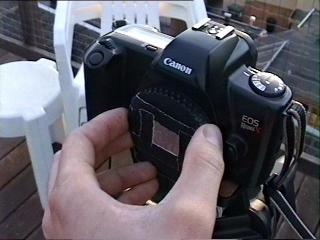
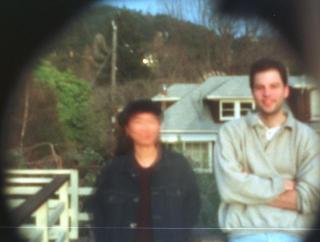


A traditional pinhole camera is just a box with a small hole in one side opposite a piece of light-sensitive film on the other. Since the hole is small, a recognizable image is formed on the film. The device beautifully illustrates photography in its most simple form.
Because film is easily exposed by stray light, the process of sealing the camera, loading film into it and processing the film can be difficult. The following technique can be used to create a pinhole camera out of any regular film camera that has interchangeable lenses. The result is a pinhole camera that uses regular 35mm film, takes multiple pictures without reloading, and can even meter the light.
Cameras are usually shipped with a round cap covering the lens mount on the front of the camera. (If you're missing this cap, or you would prefer not to modify your current one, then you can probably order a new one from the manufacturer.) This cap can be turned into a pinhole lens for the camera as follows. First, drill a 1/4 inch hole through the middle of the cap. Get a piece of black metal foil (or use a magic marker to color a piece of regular tin foil black) and then tape the tin foil over the hole. Lastly, create a small hole through the center of the foil with a pin. Remove the camera's lens and place the modified lens mount cover on the camera. You now have a 35mm, single-lens-reflex, auto-exposure, auto-advance, pinhole camera. It will look something like the picture at the top of this page, on the left. A picture taken with the camera is shown on the right. Click on the images for larger versions.
Below are two more pictures taken with the camera. On the left is a view looking into a hazy sunset. The glare is the result of light bouncing around inside the camera, owing to the fact that I hadn't blackened the tin foil. On the right is an indoor picture taken with a larger pinhole to compensate for the smaller amount of light. The result is an image with more blur. This photo doesn't exhibit the blackened corners the others do since I placed the tin foil on the back of the lens mount cover. When the foil was on the front, the back edge of the hole in the cover blocked some of the light from reaching the film.
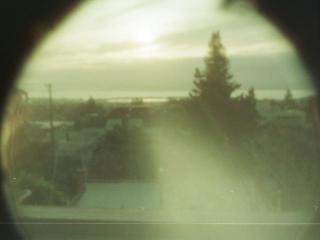
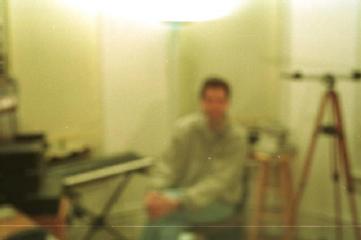
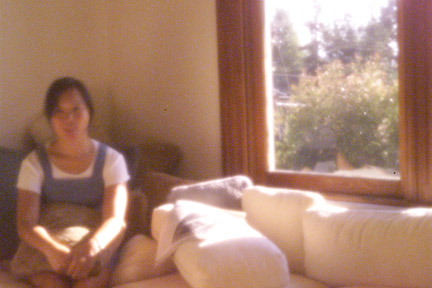
The technique can work with digital cameras as well: this final photograph was taken with a Kodak DCS520 Digital Camera, which is an electronic version of the Canon EOS-1N.
David S. Cargo's Pinhole photography pointer page
|
|
This Pinhole Photography site
owned by Paul Debevec hosted by RingSurf Next | Previous Random Site | List Sites |